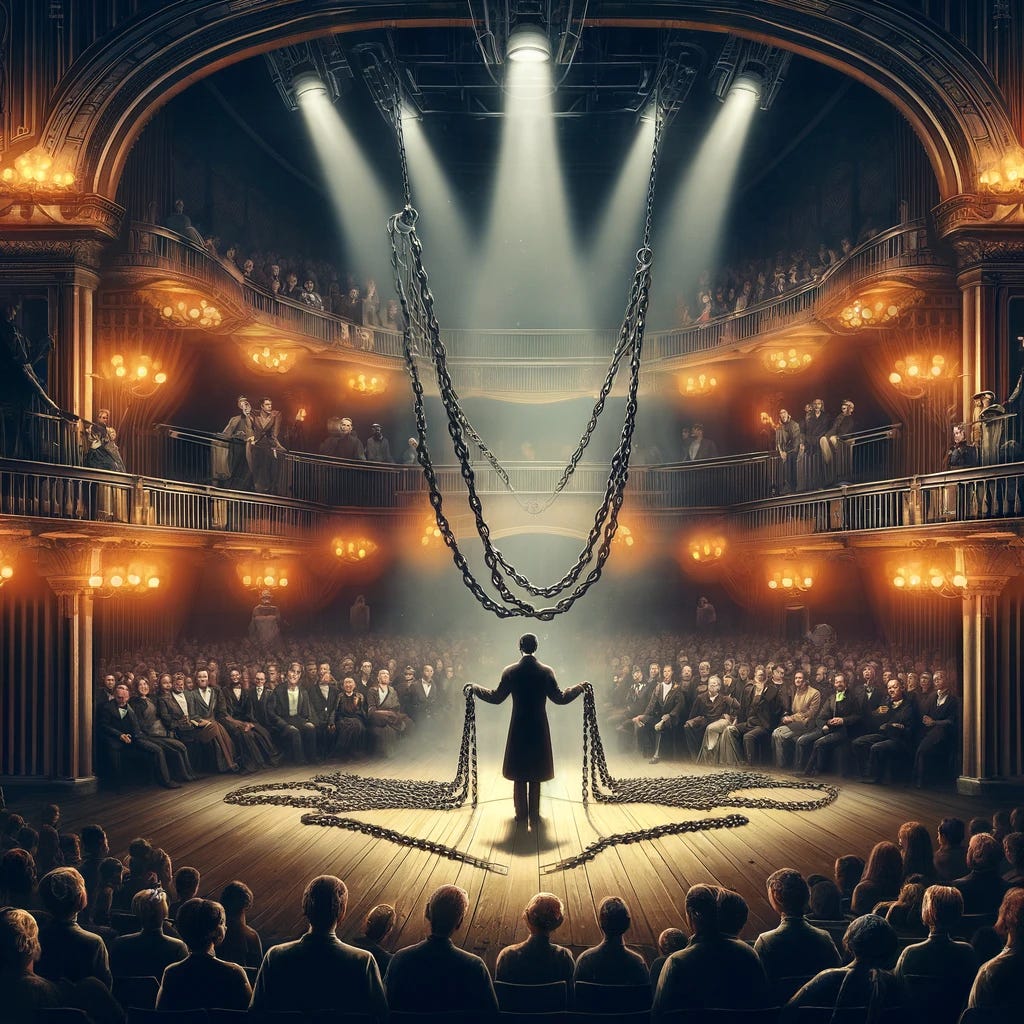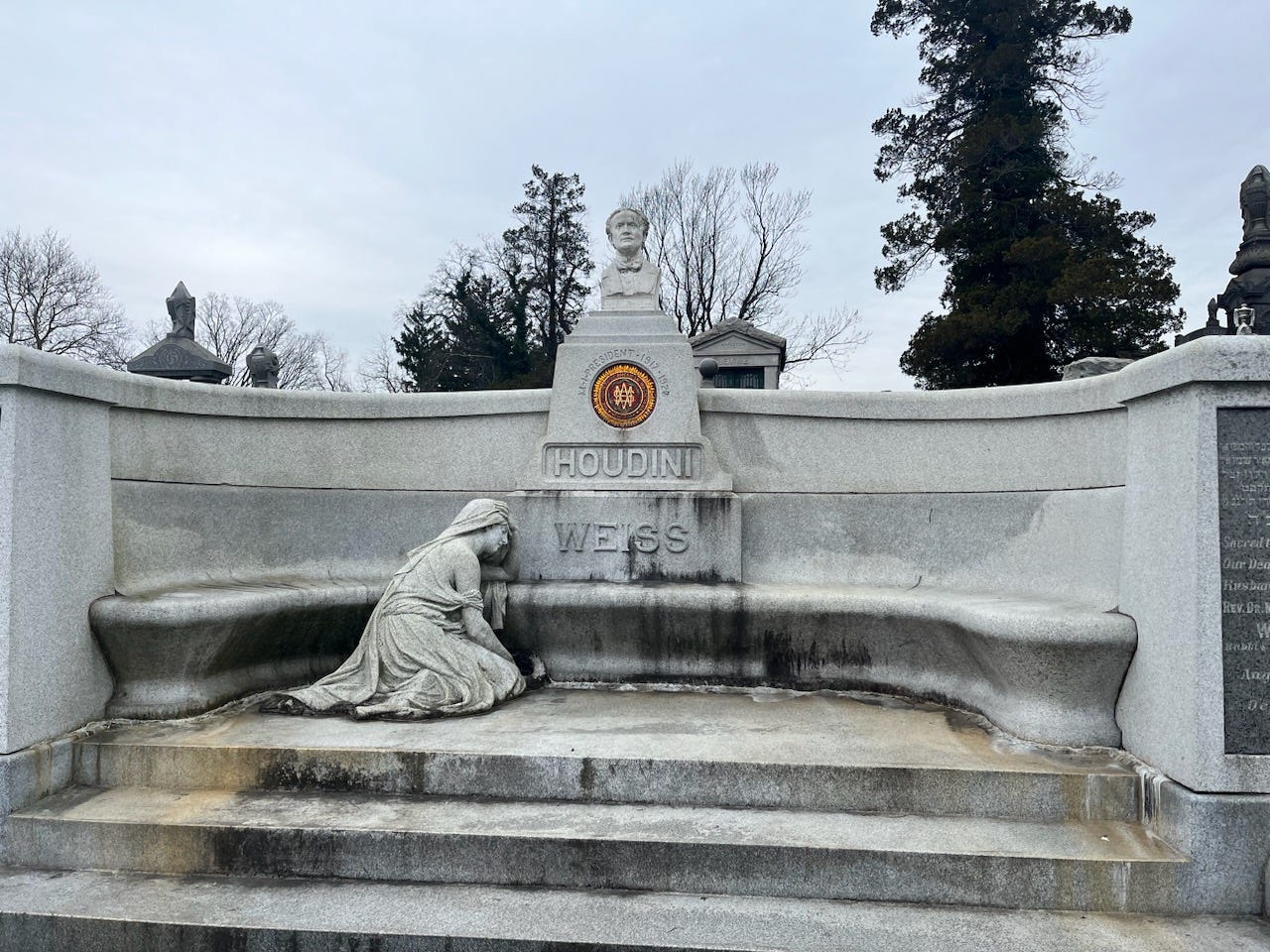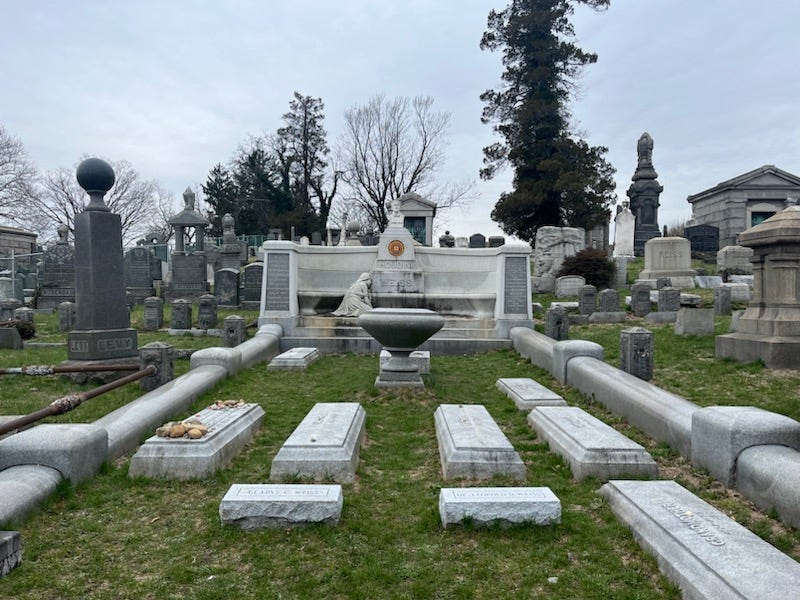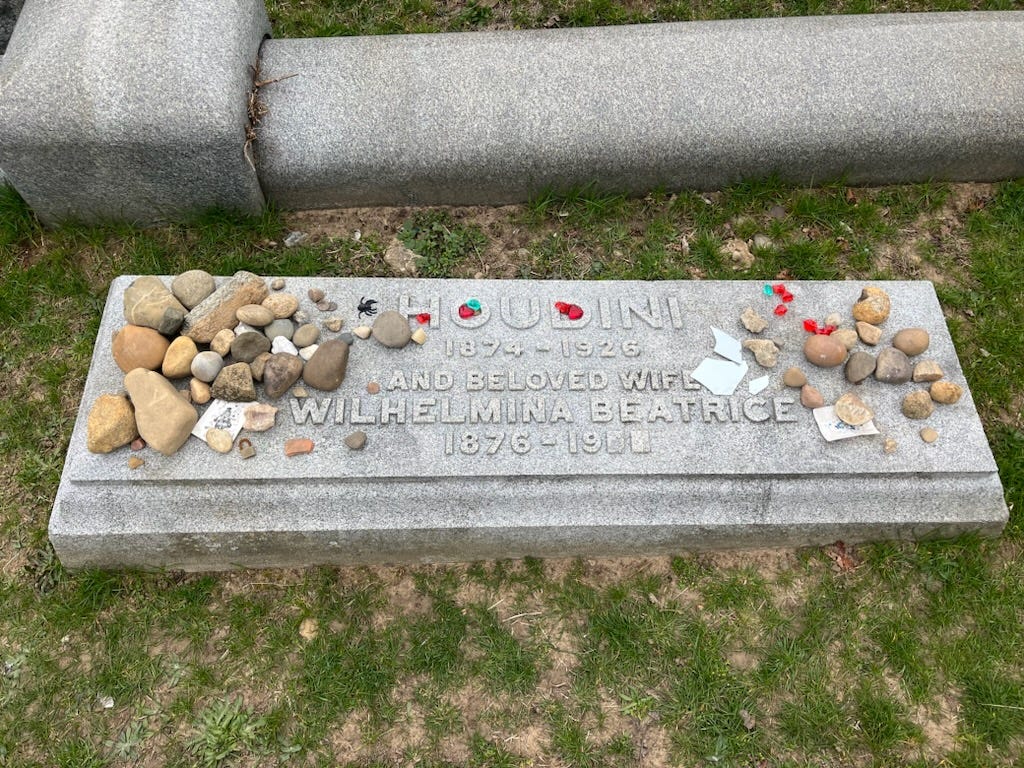As a kid, I was fascinated by magic. I was the proud owner of countless useless magic sets that were obviously fake and didn’t work. They were great; enough fun to last a kid for—well, about fifteen minutes, which was just long enough for the seven- to ten-year-old to realize that the plush “magician’s” hat in the box set wouldn’t pass as a real hat for a number of reasons, including that it was barely big enough for a rabbit to wear let alone fit inside of.
Now that the obligatory intro is done, I ask you to stop for a moment and ponder. Think about magic. When you’re done thinking, please, come back. The leash I have on this column is very short. Melissa is just about ready to give me my walking papers.
Okay, so you thought about magic for a bit, yes? What did you think of? Witches? Harry Potter? The Orlando-based basketball team?
Maybe, but chances are that at least one of you thought of Harry Houdini (hopefully). I know he’s what comes to my mind, and it isn’t because of the Six Flags ride inspired by him (although it is my favorite ride in the park).
No. I think of Houdini because he’s the epitome of magic. At least to me.
Growing up, I was always entranced by stories of his daring feats, and often believed him to have actual magical powers. As is usually the case, I found out later that his accomplishments stemmed from some serious hard work, dedication, and thousands of hours of practice—which, as an adult, I believe is even cooler than actually having magic powers.
Let’s introduce him first. The year was 1874. The man who would become known to the world as Harry Houdini was born Erik Weisz in Budapest. His family moved to the United States four years later, settling down in Wisconsin and changing the spelling of their last name to Weiss. In 1887 the Weiss family moved to good ol’ New York City.
1891 was the year Erik, now known in the magic circles as Harry Houdini, began his career. His initial career was met with little success. The problem? Houdini branded himself as “King of Cards” and tried to make his magical name stand out by performing card tricks. This move placed the young Houdini at the end of the shit-talking stick in magicians’ circles—meaning his magical peers didn’t think he was all that talented. Apparently, neither did the public. This meant one thing: Houdini needed to rebrand himself if he wanted to become the man that he aspired to be. That’s exactly what he did.
Enter Houdini’s escape acts. Harry was able to entrance the country with feats of escape. He wowed audiences as he performed show after show doing the impossible. Freeing himself from chains, handcuffs, being buried alive, ropes hanging off buildings, and of course straitjackets (which was an escape stunt first invented by Houdini’s fellow magician and brother, Dash Hardeen).
Houdini would practice his act like a madman, becoming an expert at breaking out of anything. He could usually perform his escape stunt within minutes, which obviously wouldn’t sell tickets. Instead, he would keep his audience on the edge of their seats, taking upwards of an hour on some of his stunts to truly captivate them. And it worked. You don’t get a Six Flags ride named after you for nothing.
Anyway. I’m done boring you with his origin story. It’s time to get to the good part.
Growing up in Queens, for as long as I could remember I’ve heard that Houdini was buried in a cemetery “right here.” Now that I think of it, it goes pretty far back in my lore. Honestly, hearing the bragging that we lived near Houdini’s burial plot was likely my first introduction to the fact that people die. Poor young Johnny.
Houdini is buried in Machpelah Cemetery in Glendale, a stone’s throw away from my old neighborhood. The cemetery is right off the Jackie Robinson Parkway (Queens residents know that as the worst, most horribly traffic jammed parkway in existence). Houdini’s grave—which is headlined by his head, or bust—can be seen right from Cypress Hills Street as you drive up toward the Jackie.
Whenever we’d drive near the cemetery, or I’d bring up my interest in magic, someone would mention Houdini’s grave and a blurry image of the dead magician buried six feet under would percolate into my imagination. Of course, once I got to driving age, one of the first stops was to the infamous grave.
It's actually really cool. The plot consists of the graves of nine family members. This includes the aforementioned magically inclined brother, Dash. Sadly, it doesn’t include Houdini’s wife Bess who wasn’t Jewish and had to be buried away from her husband in a cemetery in Westchester.
When you walk up to the grave, you’re greeted by the great bust of Houdini himself, likely judging your magical aptitude upon walking in. Below the bust is the crest of the Society of American Magicians, which Harry was president of from 1917-1926. Under that is a crying woman, probably Bess, and then the single stones which represent his siblings and ones literally marked Mother, Father, and Grandmother. No names included. Talk about injustice.
Since my first encounter at the site, I’ve been back a few times. People sometimes leave burnt playing cards, flowers, or coins on Houdini’s grave marker. I haven’t left more than a stone and don’t plan on ever going beyond that.
Overall, it’s a pretty cool thing to check out if you’re in the area. One thing you may not realize when visiting the grave or thinking about Houdini—which I’m sure you do a lot of—is the subject of his death.
I know I know. You’re probably thinking the same way I did. Grandiose death. Some zany final act that even the great Houdini couldn’t keep up with. Drowning in tank with his arms tied to his balls or some other genius escape idea, perhaps.
I’m here to tell you that if that’s what you were thinking, you’re wrong. Houdini, besides claiming to be an excellent escape artist (which he was), claimed he was able to withstand another dramatic feat: being able to take basically any punch to his stomach without pain.
Huh? Exactly. The day was October 22nd, 1926. Houdini was in his dressing room at the Princess Theatre in Montreal. Now 52, Harry was still at the top of his game. A student from McGill University entered the dressing room. He approached Houdini and asked about the arduous claim regarding punches to his stomach.
Houdini, unfortunately, said yes.
“Well of course I can, pal!” in a Transatlantic accent maybe.
Cue the student, boxer Jocelyn Gordon Whitehead, viciously swinging furious punches straight to Houdini’s stomach without warning. Typically, the way this trick worked, Houdini would have been extremely prepared for the blows and had a way to tighten his abdomen to act like a shield—and then just take the punches as best he could. This time the young boxer took Houdini completely off guard and basically killed him.
Literally. A few days later in Detroit on Halloween night, Houdini died. A fitting day to go, to say the least. It’s up for debate whether those dressing room punches were really the cause of the great magician’s death. I think they are. The official cause of death was listed as swelling of the abdomen, which was possibly related to appendicitis, which could have been aggravated or hidden by the brutal punches he had received.
Either way, he was gone, and went down in history as one of the greatest performers ever. His work ethic and desire to become great were the driving factors for his success. I admire the guy. And judging by the stuff people still leave at his grave almost one hundred years since his death, others out there do, too.





